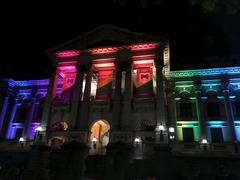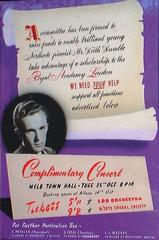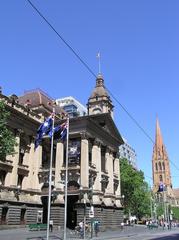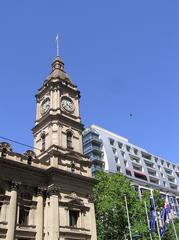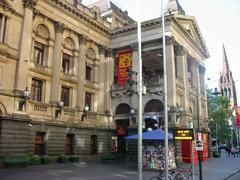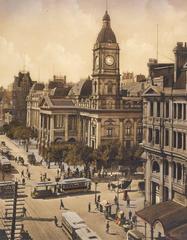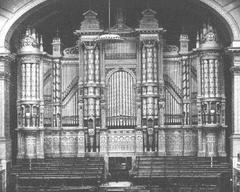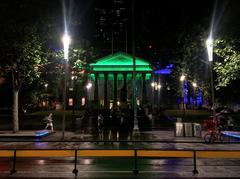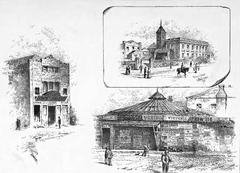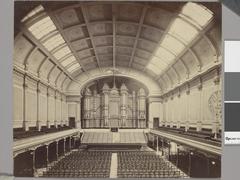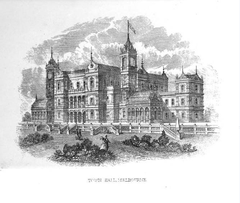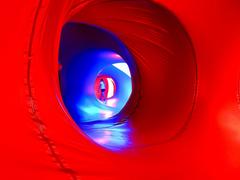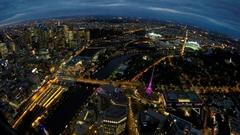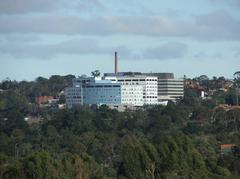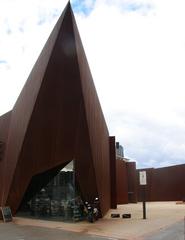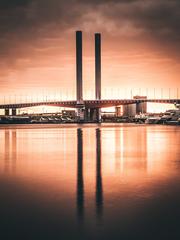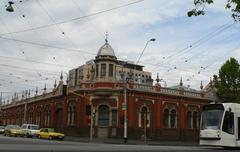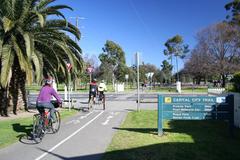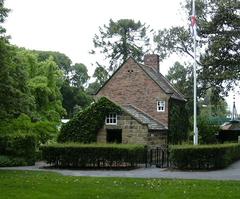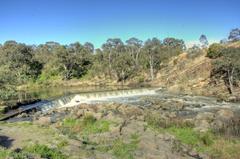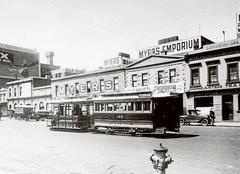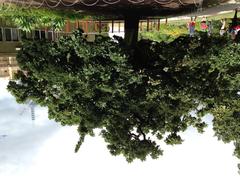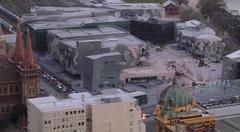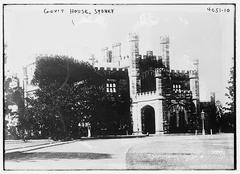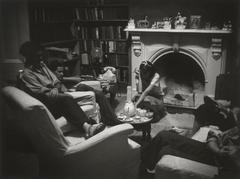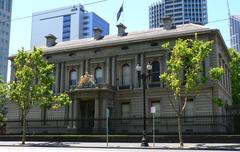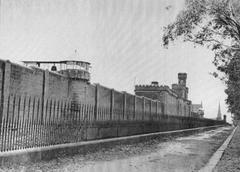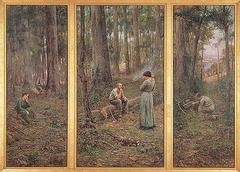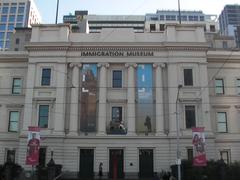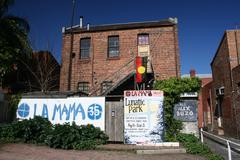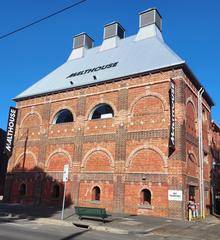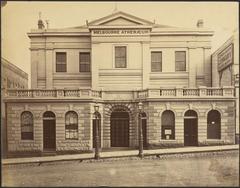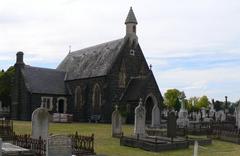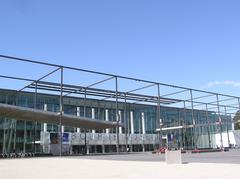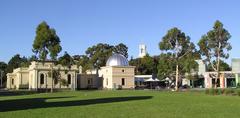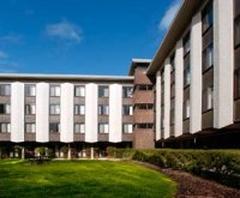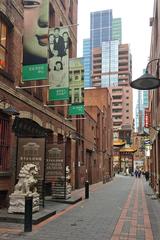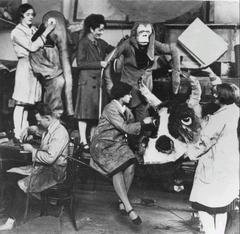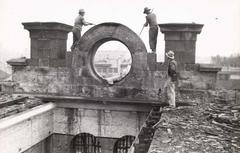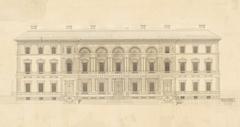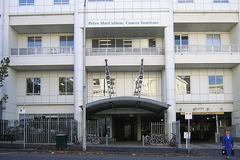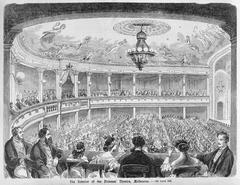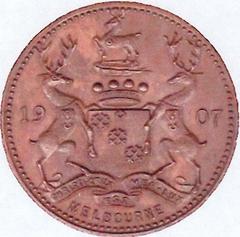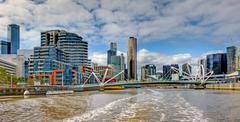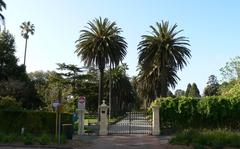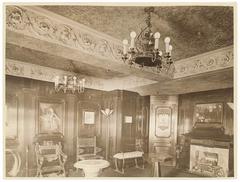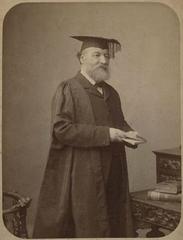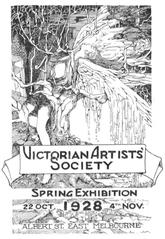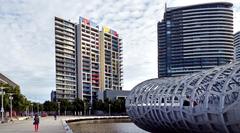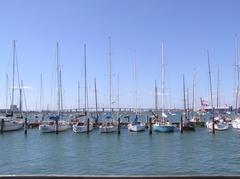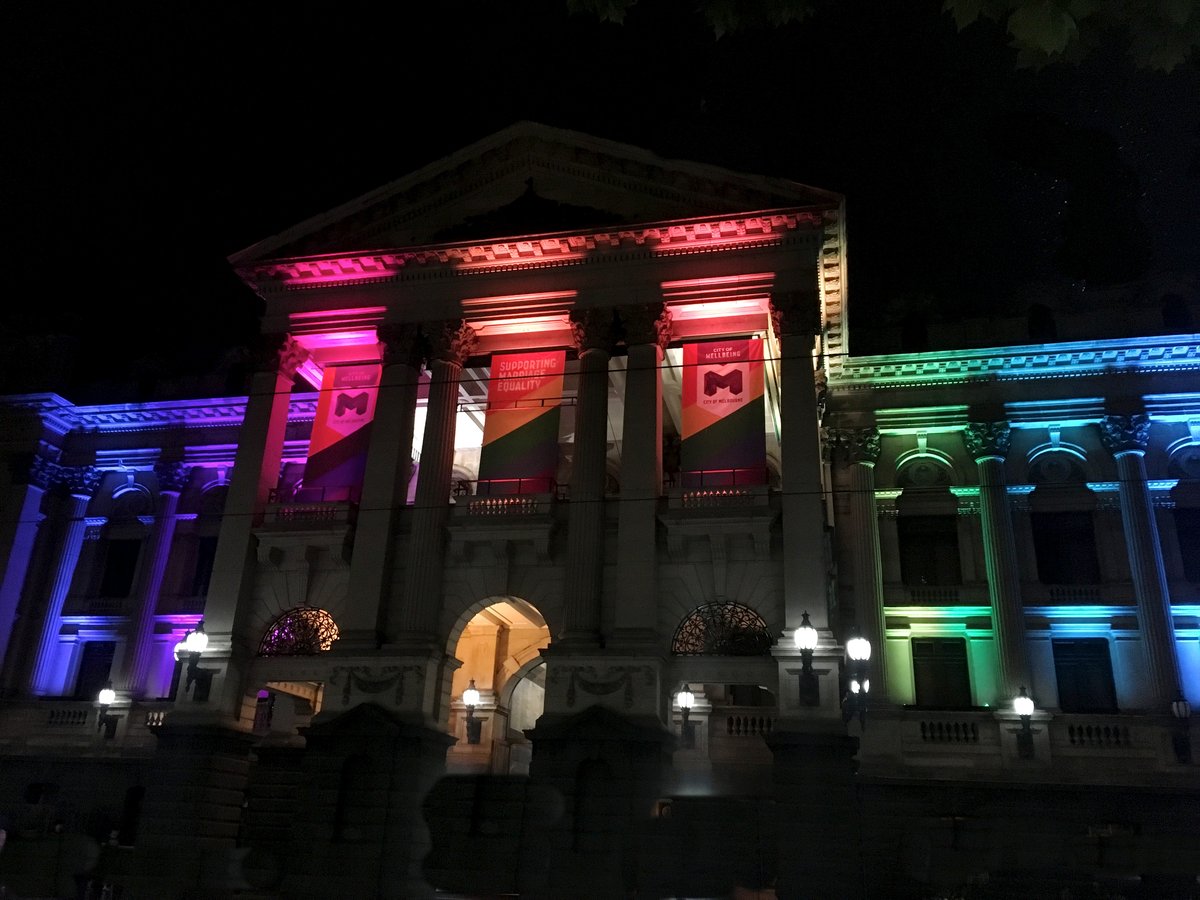
Melbourne Town Hall: Visiting Hours, Tickets, and Historical Significance Guide
Date: 03/07/2025
Introduction
Melbourne Town Hall stands as a magnificent emblem of the city’s rich history, architectural grandeur, and vibrant civic life. Located at 90–130 Swanston Street, this landmark has been the administrative and cultural heart of Melbourne since its completion in 1870. Designed by renowned architect Joseph Reed in the Second Empire style, the building’s distinctive clock tower, ornate bluestone and sandstone façade, and grand interiors—including one of the largest municipal organs in the Southern Hemisphere—make it an architectural masterpiece and a living monument to Melbourne’s evolution (What’s On Melbourne, simonfieldhouse.com).
The Town Hall has witnessed pivotal events in Australian history, from Federation debates to the Beatles’ legendary 1964 balcony appearance. It remains a vibrant hub for government, cultural festivals, concerts, and community gatherings, actively fostering inclusivity and honoring the Traditional Owners of the land—the Wurundjeri Woi-wurrung and Bunurong/Boon Wurrung peoples of the Kulin Nation (Eventfinda, Tot Hot or Not). This guide details everything you need to plan your visit, including hours, ticketing, accessibility, guided tours, and highlights of nearby attractions.
Table of Contents
- Welcome to Melbourne Town Hall: Visitor Overview
- Architectural Origins and Construction
- Historical Milestones
- Indigenous Acknowledgment and Contemporary Role
- Architectural Features & Interior Highlights
- Visiting Hours, Tickets & Guided Tours
- Accessibility and Visitor Amenities
- Nearby Attractions & Travel Tips
- Frequently Asked Questions (FAQs)
- Contact and Location
- Sources
Welcome to Melbourne Town Hall: Visitor Overview
Melbourne Town Hall is a cornerstone of the city’s identity, blending historical significance with vibrant civic and cultural activity. Visitors can explore its grand halls, stand on the famous portico balcony, and learn about the building’s role in shaping Melbourne’s past and present.
Architectural Origins and Construction
Completed in 1870, Melbourne Town Hall was conceived to anchor the city’s burgeoning civic life. Joseph Reed’s design employs the Second Empire architectural style, evident in the mansard roof, ornate columns, intricate stonework, and the iconic clock tower, which rises to 103 meters (simonfieldhouse.com). The use of bluestone and Tasmanian sandstone reflects Melbourne’s prosperity during the Victorian gold rush. Originally the largest municipal building in the Southern Hemisphere, the Town Hall soon became the focal point for major city events and governance (seniorsinmelbourne.com.au).
Historical Milestones
Foundation and Growth
The foundation stone was laid in 1867, with the official opening in 1870. Melbourne Town Hall quickly became the epicenter of municipal governance and public life, hosting council meetings, receptions, and landmark events (What’s On Melbourne).
The 1925 Fire and Renovation
A major fire in 1925 destroyed much of the Main Hall, leading to extensive renovations that improved capacity and acoustics. The restoration preserved the building’s heritage while modernizing its facilities.
The Grand Organ
The Grand Organ, installed in 1872 and refurbished in 2001, features nearly 8,000 pipes and is among the largest municipal organs in the Southern Hemisphere. It is regularly featured in concerts and civic ceremonies, adding a unique dimension to the Town Hall’s cultural offerings (What’s On Melbourne).
Iconic Events
From the Beatles’ 1964 balcony appearance to royal visits and Federation debates, the Town Hall’s walls have witnessed defining moments in Australian history (What’s On Melbourne).
Indigenous Acknowledgment and Contemporary Role
The Town Hall stands on the traditional lands of the Wurundjeri Woi-wurrung and Bunurong/Boon Wurrung peoples of the Kulin Nation. The City of Melbourne formally acknowledges this deep connection and features contemporary Aboriginal art and programs within its spaces (What’s On Melbourne).
Architectural Features & Interior Highlights
Grand Council Chambers
These chambers have witnessed the decisions that shaped Melbourne’s development. Guided tours allow visitors to stand where history was made (Melbourne Town Hall Tours Accessibility Guide).
Main Hall and Auditorium
Renowned for its grandeur and acoustics, the Main Hall hosts concerts, lectures, and festivals. The auditorium’s design—enhanced post-1925—accommodates large audiences and diverse events.
Portico Balcony
The portico balcony overlooks Swanston Street and provides a vantage point steeped in history, most notably the Beatles’ appearance in 1964 (Melbourne Town Hall Tours Accessibility Guide).
Decorative Elements
Stained-glass windows, intricate wood and stone carvings, and recent additions of Aboriginal art enrich the building’s aesthetic and cultural value (citycollection.melbourne.vic.gov.au).
Visiting Hours, Tickets & Guided Tours
- General Hours: Open Monday to Friday, 9:00 am – 5:00 pm (closed weekends & public holidays except for special events).
- Guided Tours: Available at 11 am and 1 pm on Monday, Wednesday, Thursday, and Friday. Tours last approximately 60 minutes and cover key sites including the Main Hall, Council Chamber, and portico balcony. Tours are free but require advance booking (Tot Hot or Not).
- Ticketing: Entry and standard tours are free. Some special events, concerts, or exhibitions may require tickets, available via the official City of Melbourne website.
Accessibility and Visitor Amenities
Melbourne Town Hall is fully committed to accessibility and inclusivity:
- Step-Free Access: Main entrance features paved, step-free access with tactile indicators (Melbourne Visitor Hub Accessibility Guide, p.10).
- Ramps & Elevators: All public areas and tours are accessible for wheelchair users and those with mobility aids.
- Assistive Listening Devices: Available for those with hearing impairments (Melbourne Visitor Hub Accessibility Guide, p.5).
- Accessible Toilets & Charging Points: Onsite and nearby, including points for electric wheelchairs (Melbourne News).
- Sensory Maps & Beacon Technology: Tools such as BlindSquare app and sensory maps help neurodiverse and low-vision visitors navigate independently.
- Visitor Assistance: Trained staff and volunteers provide support, accessible information, and itinerary planning (Melbourne Visitor Hub Accessibility Guide, p.3).
- Parking & Public Transport: Accessible parking nearby (233-239 Collins Street), multiple tram routes with low-floor trams and accessible train stations within 500m (Melbourne Visitor Hub Accessibility Guide, p.9).
Nearby Attractions & Travel Tips
- Nearby: Federation Square, St. Paul’s Cathedral, State Library of Victoria, Bourke Street Mall, and Melbourne’s famous laneways.
- Travel Tips: Use the extensive tram network (stops within 100m of the entrance), arrive early to explore nearby cafes, and check event calendars for special exhibitions or concerts.
Frequently Asked Questions (FAQs)
What are the visiting hours for Melbourne Town Hall?
Monday to Friday, 9:00 am to 5:00 pm. Closed weekends and public holidays except during special events.
Is there an entry fee or ticket required?
Entry and guided tours are free, but advance booking is strongly recommended. Some special events require tickets.
Are tours wheelchair accessible?
Yes, all public spaces and tours are accessible for wheelchair users and visitors with mobility aids.
Can I bring children on tours?
Yes, tours are family-friendly and pram-accessible, with content tailored for visitors of all ages.
How do I book a guided tour?
Book via the City of Melbourne website or by calling 03 9658 9658.
What is the best way to get there?
Trams are the most convenient option, with stops at Collins Street and Swanston Street. Accessible train stations and parking are nearby.
Contact and Location
- Address: 90–130 Swanston Street, Melbourne 3000
- Contact: 03 9658 9658 | [email protected]
- Official Website: Melbourne Town Hall Tours
Summary and Recommendations
Melbourne Town Hall remains an enduring symbol of the city’s civic pride and cultural vibrancy. Its grand Second Empire architecture, storied history—from 19th-century construction and the 1925 fire to the Beatles’ iconic appearance—and ongoing role as a bustling venue for government, arts, and community events make it a must-visit for locals and tourists alike (What’s On Melbourne, Eventfinda). The Town Hall’s commitment to accessibility and inclusivity ensures everyone can experience its grandeur, while its location amidst Melbourne’s cultural precincts makes it a convenient and enriching stop.
To fully experience Melbourne Town Hall, book your guided tour in advance, utilize accessible features as needed, and consider downloading the Audiala app for real-time updates and audio guides. Embrace the opportunity to explore a living piece of Melbourne’s heritage and discover the narratives that shaped the city’s past and inform its present (Tot Hot or Not, Melbourne Visitor Hub Accessibility Guide).
Sources
- What’s On Melbourne
- simonfieldhouse.com
- melbourne.vic.gov.au
- Eventfinda
- Melbourne Visitor Hub Accessibility Guide
- Tot Hot or Not
- seniorsinmelbourne.com.au
- citycollection.melbourne.vic.gov.au
- Melbourne News
